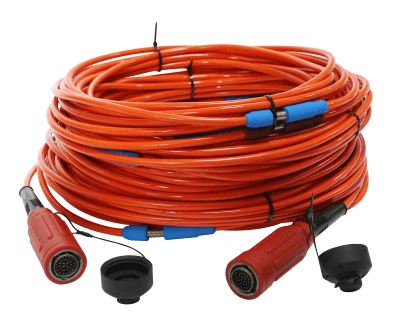Did you know that geophysical cables can be used for a variety of different purposes? They are commonly used in seismic exploration in the oil and gas industry. However, they can also be used for other things, such as environmental monitoring, oceanographic research and construction.
A geophysical cable is a cable specially designed for use in a variety of different environments. There are many types of geophysical cables, each with its own unique advantages. They are usually used in areas where there is a lot of water or the ground is very sensitive.
The basics of a geophysical cable
As the name suggests, geophysical cables are used in the geophysical field. It is a cable specially designed for use in environments where there is a risk of high voltages. Geophysical cables are used in a variety of applications such as oil and gas exploration, seismology and geothermal energy production.
Geophysical cables are usually made of high-density polyethylene (HDPE) insulation. This type of insulation is chosen for its resistance to heat, chemicals and physical damage. Metal conductors in geophysical cables are also coated with a thick layer of insulation to prevent corrosion.

The different types of geophysical cables
There are three main types of geophysical cables: power cables, control cables and instrument cables. Power cables are used to provide electrical energy to equipment, control cables are used to transmit signals between equipment, and instrumentation cables are used to transmit data from sensors.
Geophysical cables are used in a variety of applications including oil and gas exploration, geothermal energy production, seismic monitoring and environmental research. They are designed to operate in harsh environments, often underground or underwater, and must be able to withstand extreme temperatures, pressures and mechanical stress.
The many advantages of having a geophysical cable
When most people think of geophysical cables, they think of the large, expensive cables used in offshore oil and gas exploration. However, there are many other uses for these cables, including disaster relief, environmental monitoring and telecommunications.
Geophysical cables are robust and able to withstand extreme weather conditions and harsh environments. They are also very flexible, making them ideal for a variety of applications.
There are many advantages to using geophysical cables. For example, in disaster relief, geophysical cables can be used to quickly restore power and communications after natural disasters. In the environmental field, geophysical cables can be used to monitor soil moisture, water quality, and air quality, among others.
The installation process of a geophysical cable
The installation process of geophysical cables can be divided into four main steps: site preparation, cable laying, cable connection and cable testing.
Before starting to install the cables, the site must be prepared. This includes clearing the area where the cable will be run and making sure the area is clear of obstructions. Once the site is prepared, the cables can be laid. This usually involves using a trencher to bury the cable in the ground.
After the cables are laid, the power supply must be connected. This connection is usually made at a substation. After connecting the cable, it must be tested to make sure it is working properly. Testing usually involves sending current through a cable and measuring voltage.
The future of geophysical cables
As the world becomes more connected, the need for reliable and high-speed communications infrastructure will only grow. Geophysical cables are an important part of this infrastructure, and their role will become even more important in the future.
As data demands increase, geophysical cables will need to be able to transmit more data at higher speeds. This will require continuous innovation in cable design and manufacturing. In addition, new installation and maintenance methods need to be developed to meet the demands of growing and evolving networks.
At Seis Tech, we're professional suppliers of velocity geophones, piezo sensor hydrophones, ert cables, geophone spread cables and related coaxial connectors. If you have questions about any of our products, don't hesitate to contact us at sales@seis-tech.com. We'll be happy to help you out.

